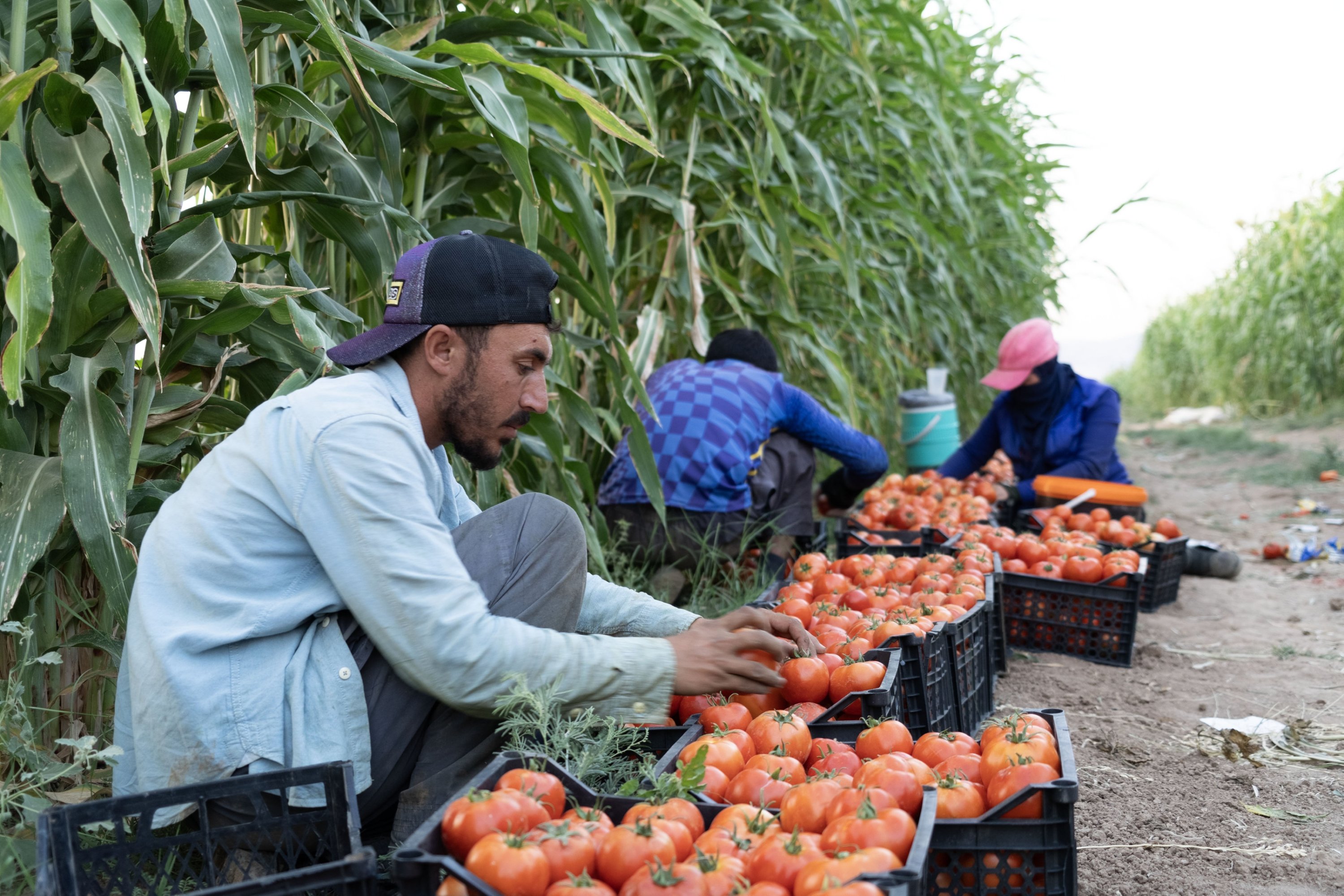© Turkuvaz Haberleşme ve Yayıncılık 2024
A decade after Daesh terrorists overran the Yazidi community in the Sinjar region of northern Iraq in August 2014 and PKK terrorists wrestled control of the region, the Yazidis are struggling to get by with farming at the refugee camps in the northern city of Duhok until they can return home.
In an Aug. 3, 2014, attack on the Sinjar district, the historic land of Yazidis, Daesh terrorists kidnapped and killed thousands of people, including women and children, or detained them in areas they controlled.
Approximately 300,000 people lived in Sinjar before the attacks, with two-thirds of them being Yazidis and the remaining population comprising Sunni Kurds and Arabs.
The PKK terrorist organization managed to establish a foothold in Sinjar in 2014 under the pretext of protecting the Yazidi community from Daesh terrorists. The terrorist group was accused of blocking aid to the Yazidi minority in Iraq while hindering their return to the Sinjar region. This is despite the 2020 Sinjar Agreement that called for PKK and other armed groups to leave and for the appointment of a mayor with a police force composed of locals.
Türkiye itself often targets PKK hideouts in northern Iraq close to its border, where the group is trying to establish what Ankara calls a “terror corridor.” PKK has massacred over 40,000 people in a four-decade terror campaign in Türkiye.
As the stalemate continues, Sinjar remains underdeveloped. Families who do return receive a one-time payment of about $3,000 from the government.
Meanwhile, more than 200,000 Yazidis remain in Iraq’s Kurdistan Regional Government (KRG), many living in shabby tent settlements. The Iraqi government is pushing to break up these camps, insisting it's time for people to go home.
"You can't blame people for having lost hope. The scale of the damage and displacement is massive and for many years, extremely little was done to address it," said Khalaf Sinjari, the Iraqi prime minister's adviser for Yazidi affairs.
This government, he said, was taking Sinjar seriously.
It plans to spend hundreds of millions of dollars – including all previously unspent budgets since 2014 – on development and infrastructure, including for paying compensation, building two new hospitals and a university and linking Sinjar to the country’s water network for the first time. "There is hope to bring back life," said Sinjari, himself a member of the Yazidi community.
However, the presence of an estimated 50,000 Daesh fighters and their families across the border in Syria in detention centers and camps stokes fears of history repeating itself.
In the meantime, Yazidi families, men, women and children alike, are toiling in fields around the Sharia refugee camp under the scorching sun to make a living.
The community demands that the conditions in Sinjar be improved to be able to return home.
“Now we have to live in camps, but I will get back home if Sinjar is back to normal,” Halef Shengali, a camp resident, told Anadolu Agency (AA). “Sinjar is currently not safe. We want illegal armed groups (PKK) to leave our region. If they do, we can return home and farm our own lands.”

Many other Yazidis, like Shengali, have been farming in Sinjar for up to 15 years. They also try to maintain their livelihoods in the refugee camp by selling their produce in local markets.
Another camp resident, Dahil Hussein, said he has been farming with his wife for 20 years.
“We have a big family of 10. We farm the land around the tent to earn our living because conditions here are very severe,” Hussein said. “We are not civil servants and we don’t have salaries. We have to work to earn our living.”
The Yazidis, whose mass killings were recognized as a genocide by the United Kingdom in August last year, are a Kurdish-speaking ethno-religious minority found mainly in Iraq.
They are followers of an ancient religion rooted in Zoroastrianism that emerged in Iran over 4,000 years ago.
Of the world's nearly 1.5 million Yazidis, the largest number, 550,000, lived in Iraq before the Daesh attacks in 2014.
Daesh attacked the Yazidi bastion of Sinjar in August 2014, killing over 1,200 people, leaving several hundred children orphaned and destroying nearly 70 shrines, according to local authorities. A further 6,400 Yazidis were abducted, around half of whom were rescued or managed to flee.
